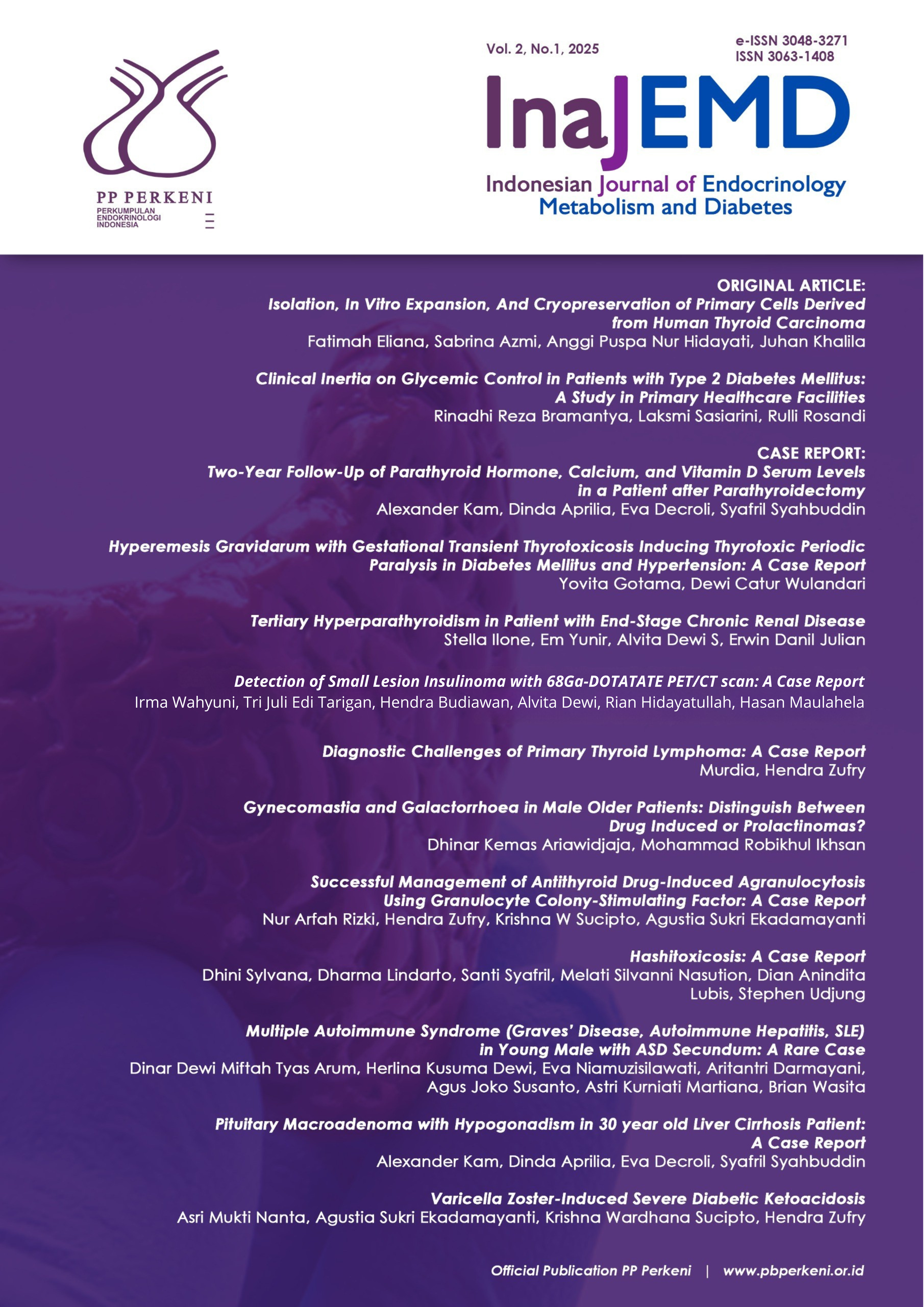Clinical Inertia on Glycemic Control in Patients with Type 2 Diabetes Mellitus: A Study in Primary Healthcare Facilities
Keywords:
Type 2 diabetes mellitus, glycemic control, HbA1c, clinical inertia, primary healthcareAbstract
The prevalence of type 2 diabetes mellitus (T2DM) in Indonesia continues to rise, with projections estimating 28.6 million cases by 2045. This increase poses significant health and economic burdens, especially due to complications resulting from poor glycemic control. This study aimed to evaluate the proportion of T2DM patients achieving optimal glycemic control (HbA1c ≤7%) and to identify factors related to clinical inertia in primary healthcare facilities in Malang, Indonesia. A cross-sectional study design was used, incorporating secondary data from 2256 PROLANIS patients' medical records (2020) and primary data from 580 questionnaires administered to doctors, healthcare providers, and patients. Only 32% of patients achieved HbA1c ≤7%, with higher levels of HbA1c observed among male patients and those with abnormal lipid profiles and microalbuminuria. Metformin alone was associated with the highest rate of glycemic control, while combination regimens such as metformin + sulfonylurea were linked to lower control. Logistic regression identified age, sex, lipid profile, and microalbuminuria as significant factors affecting glycemic control. From the provider side, good clinical practices were associated with adherence to guidelines, moderate workloads, and sufficient patient education. However, variability in guideline availability and lack of standardized protocols in Prolanis facilities posed barriers. Patient knowledge did not correlate significantly with treatment adherence, although most patients had moderate understanding of their condition. These findings underscore the need for standardized care guidelines and targeted interventions at the patient, provider, and system levels to improve glycemic outcomes and reduce diabetes-related complications in primary care settings.
Downloads
Downloads
Published
Issue
Section
License
Copyright (c) 2025 Journal

This work is licensed under a Creative Commons Attribution-NonCommercial-NoDerivatives 4.0 International License.
Authors retain copyright and grant the Indonesian Journal of Endocrinology, Metabolism and Diabetes (InaJEMD) the right of first publication with the work simultaneously licensed under a Creative Commons Attribution-NonCommercial-NoDerivatives 4.0 International License (CC BY-NC-ND 4.0) that allows others to share the work with an acknowledgement of the work's authorship and initial publication in this journal.
© Indonesian Journal of Endocrinology, Metabolism and Diabetes (InaJEMD). Published by the Indonesian Society of Endocrinology (PERKENI).





